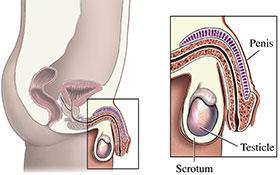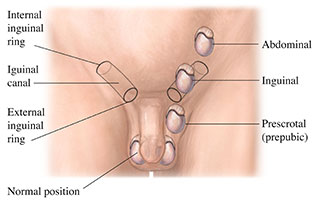Testicular Cancer Facts
What Is Testicular Cancer?

Testicular cancer forms in the testicles, which produce sperm and the hormone testosterone. Although rare compared to other cancers, this is the most common cancer for young men. Typically, testicular cancer doesn’t present symptoms in the early stages, which is why men should get to know their risk factors.
Fortunately, although new cases have doubled in the last few decades, survival rates have increased due to improved treatments.
Stages of Testicular Cancer
After a diagnosis of testicular cancer, doctors will order additional tests to define the cancer stage. The stage is a key factor for defining a personalized treatment plan.
- Stage 0: The cancer is only in the small tubes inside each testicle (seminiferous tubules).
- Stage 1: The tumor has grown outside the testicle and into nearby structures.
- Stage 2: The cancer has spread to one or more nearby lymph nodes.
- Stage 3 and 4: At this point, the cancer has spread to distant parts of the body.
Types of Testicular Cancer
The testicles comprise many types of cells, each of which can develop into one or more forms of testicular cancer. More than 90% of testicular cancer cases start in germ cells, which are the cells that make sperm.
The main types are seminomas and non-seminomas.
Seminomas can grow and spread more slowly than non-seminomas. Most seminomas are classical seminomas (which occur in men aged 25 and 45); more rare are spermatocytic seminomas (which affect older men). Spermatocytic tumors can grow more slowly and are less likely to spread than classical seminomas.
Non-seminomas usually occur in men between their late teens and early 30s. The four main subtypes are embryonal carcinoma, yolk sac carcinoma, choriocarcinoma and teratoma.
- Embryonal carcinoma cells are found in approximately 40% of testicular tumors, but pure embryonal carcinomas are uncommon, accounting for only 3% to 4% of all tumors. They are named because these tumors can look like tissues of very early embryos. This non-seminoma subtype can grow rapidly and spread outside the testicle.
- Yolk sac carcinoma cells look like the yolk sac of an early human embryo. This type is most common in children and infants, but pure yolk sac carcinomas rarely occur in adults. Yolk sac carcinomas respond very well to chemotherapy.
- Choriocarcinoma is very rare and rapid-growing type of testicular cancer in adults. Pure choriocarcinoma can spread quickly to other parts of the body, including the lungs, bones and brain. Choriocarcinoma cells are usually found with other non-seminoma cells in mixed germ cell tumors.
- Teratomas are germ cell tumors with that appear like the three layers of a developing embryo: the endoderm, mesoderm and ectoderm. Teratomas typically present in mixed germ cell tumors.
Testicular germ cell cancers can start as noninvasive carcinoma in situ (intratubular germ cell neoplasia), They do not always become malignant.
These tumors originate in stroma — the supportive and hormone-producing tissues of the testicles — and comprise less than 5% of adult testicular tumors but up to 20% of childhood testicular tumors.
The main types are Leydig cell tumors (which make male sex hormones) and Sertoli cell tumors (which support and nourish the sperm-making germ cells. These tumors are usually benign. However, when a small number of Leydig and Sertoli cell tumors spread to other parts of the body, they usually don't respond well to chemotherapy or radiation therapy. You'll want to work with a comprehensive cancer center for these reasons.
How Testicular Cancer Develops
Testicular cancer starts when cells in your testicles start to multiply and grow out of control. However, cells in nearly any part of the body can become cancer and spread to other parts of the body.
Cancers that start in another organ and then metastasize to the testicle are called secondary testicular cancers. However, these are not true testicular cancers because they don't originate in the testicles.
Lymphoma is the most common secondary testicular cancer. In fact, testicular lymphoma is the most more common in men older than 50 than primary testicular tumors.
Cancers of the prostate, lung, melanoma, kidney and other organs also can spread to the testicles.
One of the main risk factors for testicular cancer is having an undescended testicle.

Approximately half of testicular cancer cases are found in men in their 20s and 30s.
White men have a higher risk for testicular cancer.
Men who have had testicular cancer in one testicle are at higher risk for getting it in the other one.
Having a father or brother with testicular cancer increases the risk that you will get it as well.
Men infected with HIV may have a higher risk for developing testicular cancer.
What Are the Symptoms of Testicular Cancer?
Possible testicular cancer warning signs may include:
- An uncomfortable, but not necessarily painful lump on your testicle
- Swelling or enlargement of a testicle
- Heaviness or aching in the scrotum or abdomen
- Tenderness or swelling in the breast tissue
- Lower back pain